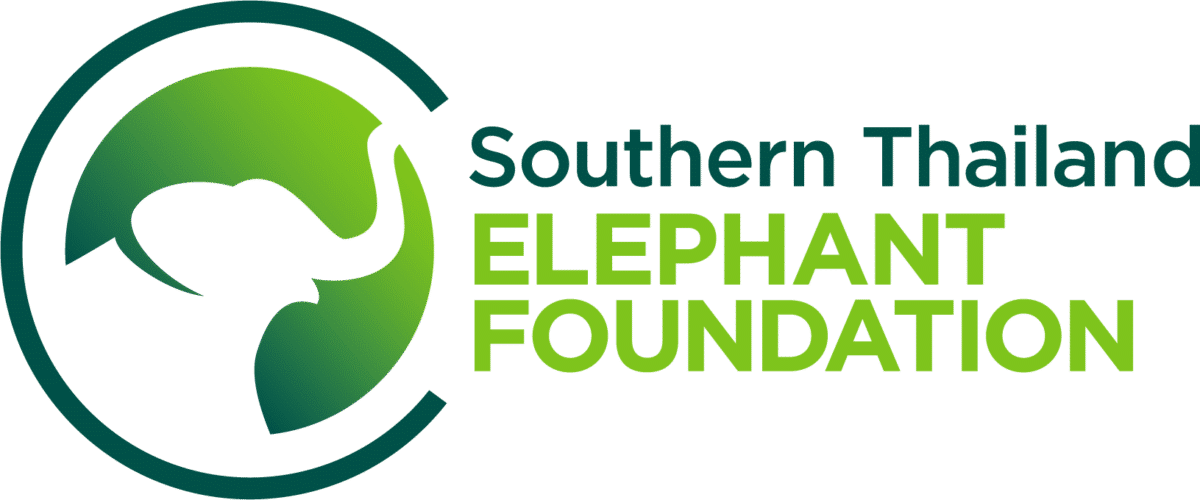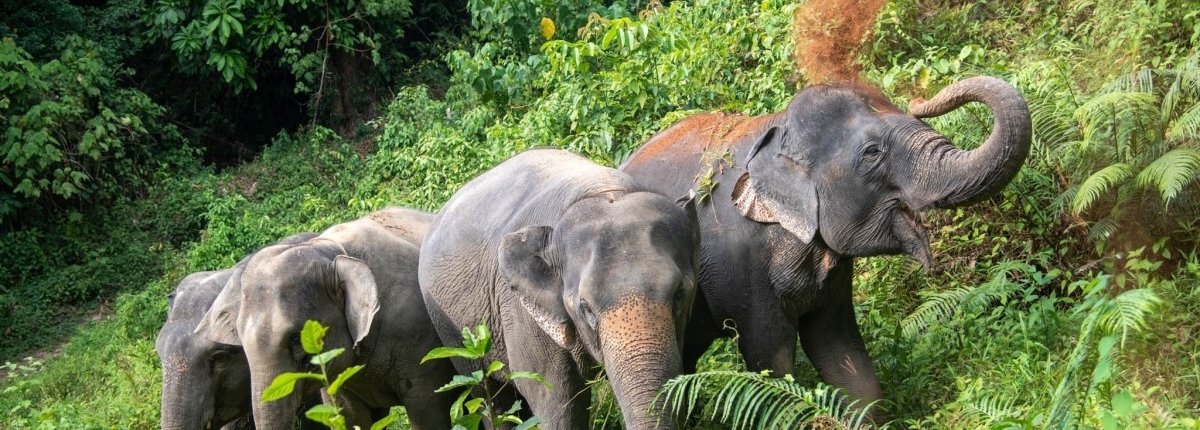Saving Thailand’s Elephants
Young elephants grazing in the jungle in Southern Thailand
Despite limited funds, Thai people are determined to protect their elephants.
Following their rapid decline over the last hundred years, Asian elephants are now classified as an endangered species. In Thailand the authorities and NGOs are working hard to control illegal killing of wild elephants by monitoring poaching incidents and by increasing efforts to prevent the trade in ivory. The Elephant Trade Information System (ETIS) documents seizures of ivory and evidence of illegal ivory trade. Patrol teams carry out hundreds of inspections annually and special forces gather intelligence. Airport security has been heightened with new technologies, and seized ivory is incinerated. Campaigns and media broadcasts have increased awareness amongst tourists and local people about the ivory trade ban, and ivory control centres now receive tens of thousands of calls per year. All these efforts appear to be working – research by TRAFFIC [1] in 2016 showed a 96% reduction of ivory on sale in Bangkok markets since 2012.
Where ever possible, wild elephants have been moved to protected forests, and efforts made to build their food sources. The good news is that the DNP has reported that the wild elephant population is now increasing, although it is difficult to record this accurately [3]. Farmers have been encouraged to plant grassy barriers that protect against flooding and drying, so farmland can be reused sustainably, often to provide elephant food. For example, at the STEF Veterinary Centre Khok Kloi, elephant food is being grown on land converted from old rubber tree plantations.
Because of forest clearance, much of the elephants’ natural habitat is now fragmented. As a result, wild elephants often stray onto farms to feed, ruining crops, and in the past hundreds of these unwelcome visitors were killed by farmers. Solutions such as natural barriers, surveillance systems and low voltage fences are now popular and proven deterrents (see IUCN report on Human elephant conflict in Thailand). Environmental workers have also introduced salt licks to forested areas, to lure elephants away from farms. Unsurprisingly, many farmers still see elephants as a nuisance [3]. In an attempt to increase public awareness and preserve the cultural significance of the elephant in Thailand, a National Elephant Day is held each year in March.
The Thai government and NGOs like STEF provide veterinary care for domesticated elephants across Thailand. STEF is also keen to promote good practice by mahouts (elephant owners and carers) and to educate people about elephant welfare and the significance of the elephant in Thai culture. A further aim of STEF is to run a retirement home at its Veterinary Centre at Khok Kloi for old or injured elephants that can no longer be cared for by their owners. Please help us to help Thailand’s elephants by considering making a donation or, to support our important veterinary services, you could become one of our Medicine Angels.
[1] https://www.traffic.org/site/assets/files/3683/traffic-report-bangkok-ivory.pdf
[2] The Nation Thailand. (2017). Humans must learn to live with elephants, say experts. [Online]. Available at: https://www.nationthailand.com/in-focus/30328124 [Accessed 5 April 2023]
[3] For information on the elephant/human conflict in Sri Lanka, see: http://www.ccrsl.org/Programs/elephant-conservation/human-elephant-conflict-hec
[Click on photos below to enlarge and read captions]






